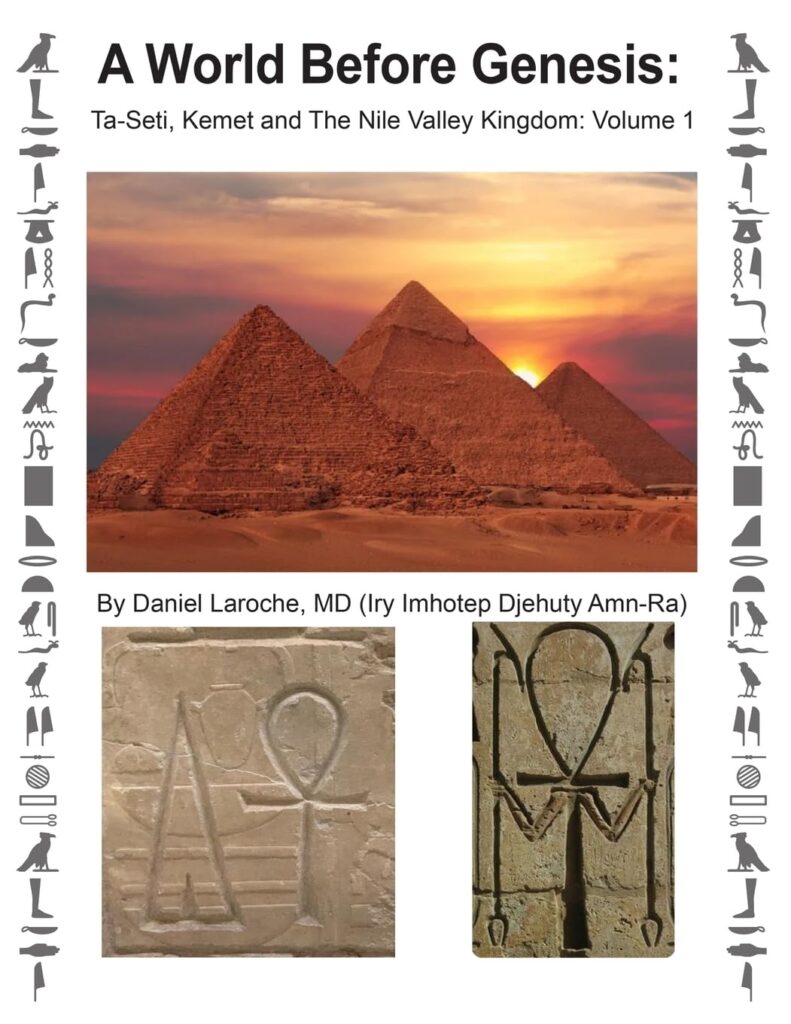In the new book, A World Before Genesis, you will discover the world of Kemet history. Kemet, often referred to as “KMT” (pronounced “keh-MET”), is the ancient name for the civilization located in the northeastern region of Africa, particularly along the Nile River. It is the indigenous name for the region commonly known as Egypt today. The term “Kemet” translates to “the black land,” a reference to the fertile black soil left behind by the annual inundation of the Nile River. This black soil was essential for agriculture and played a central role in the development and sustainability of the ancient Egyptian civilization.
Kemet is historically significant for a multitude of reasons:
- One of the World’s Oldest Civilizations: Kemet is one of the world’s oldest and most enduring civilizations, with a history dating back over 5,000 years. It is renowned for its longevity and cultural continuity.
- Contributions to Civilization: The Kemet civilization has made significant contributions to various fields, including architecture, engineering, mathematics, medicine, art, and literature. The construction of awe-inspiring structures such as the pyramids and temples stands as a testament to their architectural and engineering prowess.
- Hieroglyphics: Kemet is known for its system of writing, hieroglyphics, which used pictorial symbols to represent words and sounds. This system allowed for the recording of knowledge, history, and religious texts on papyrus and stone.
- Religion and Spirituality: The ancient Kemet civilization had a rich and complex belief system. Their religious beliefs, centered around a pantheon of gods and goddesses, influenced their art, culture, and way of life. The most well-known figure from Kemet’s religious pantheon is the god Ra, the sun god.
- The Nile River: The Nile River played a central role in the life of the ancient Kemet people. It provided water, fertile soil, and transportation, making agriculture and trade possible. The annual flooding of the Nile, known as the inundation, was both a blessing and a challenge for the people of Kemet.
- Legacy and Influence: The legacy of Kemet extends far beyond its ancient borders. The knowledge and innovations of this civilization have had a profound influence on subsequent cultures and civilizations, including the Greeks and Romans.
- Champion of Knowledge: Kemet placed a high value on education, leading to a class of scribes who were responsible for preserving knowledge, maintaining records, and recording historical events.
It’s important to note that Kemet’s rich history is often not given the recognition it deserves, and this has led to a desire among many to reclaim and promote the true history and contributions of this ancient African civilization. Kemet serves as a reminder of the immense cultural and intellectual achievements that have shaped human history and continues to be a source of inspiration for those interested in ancient history, archaeology, and African heritage.
